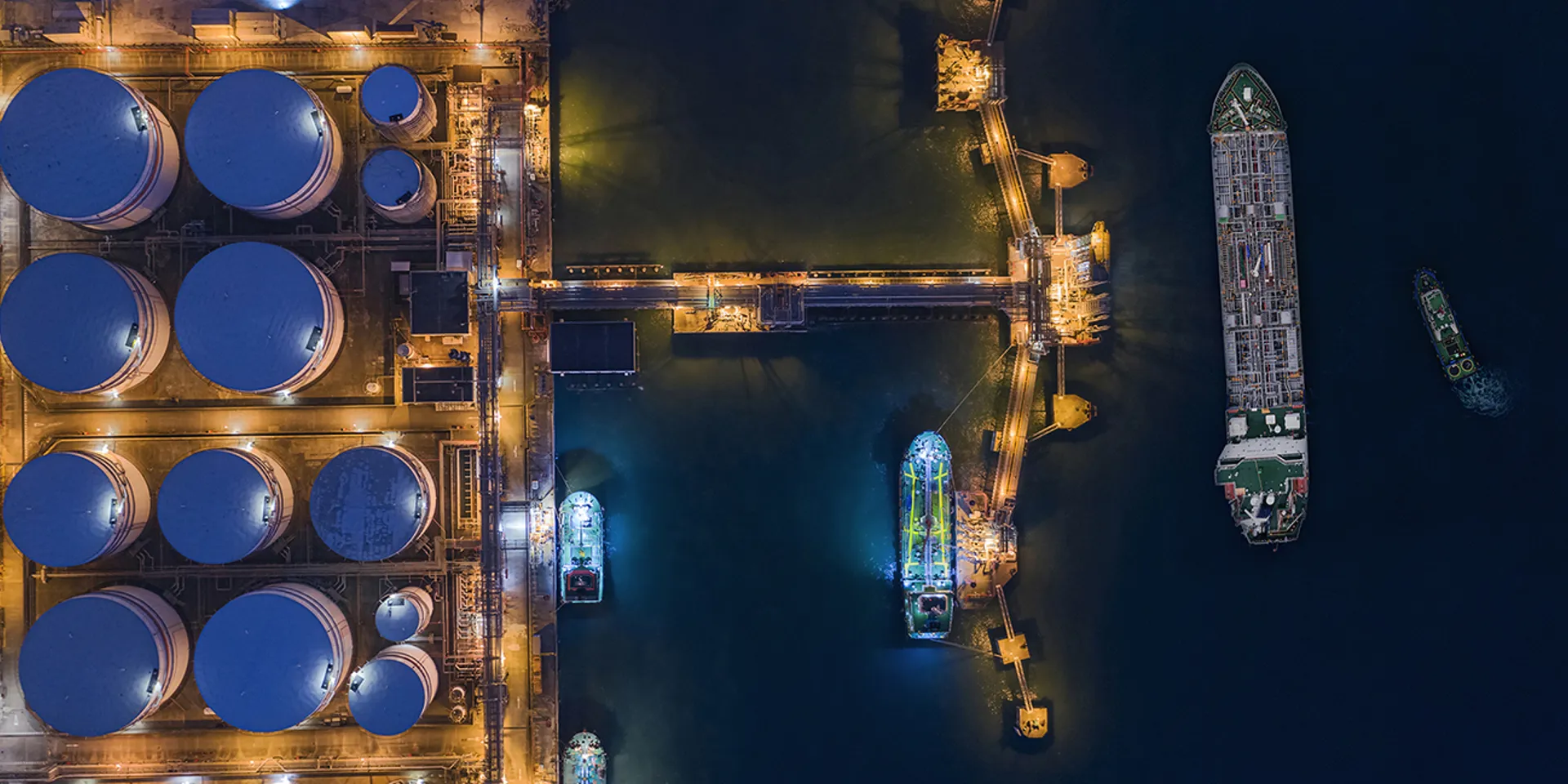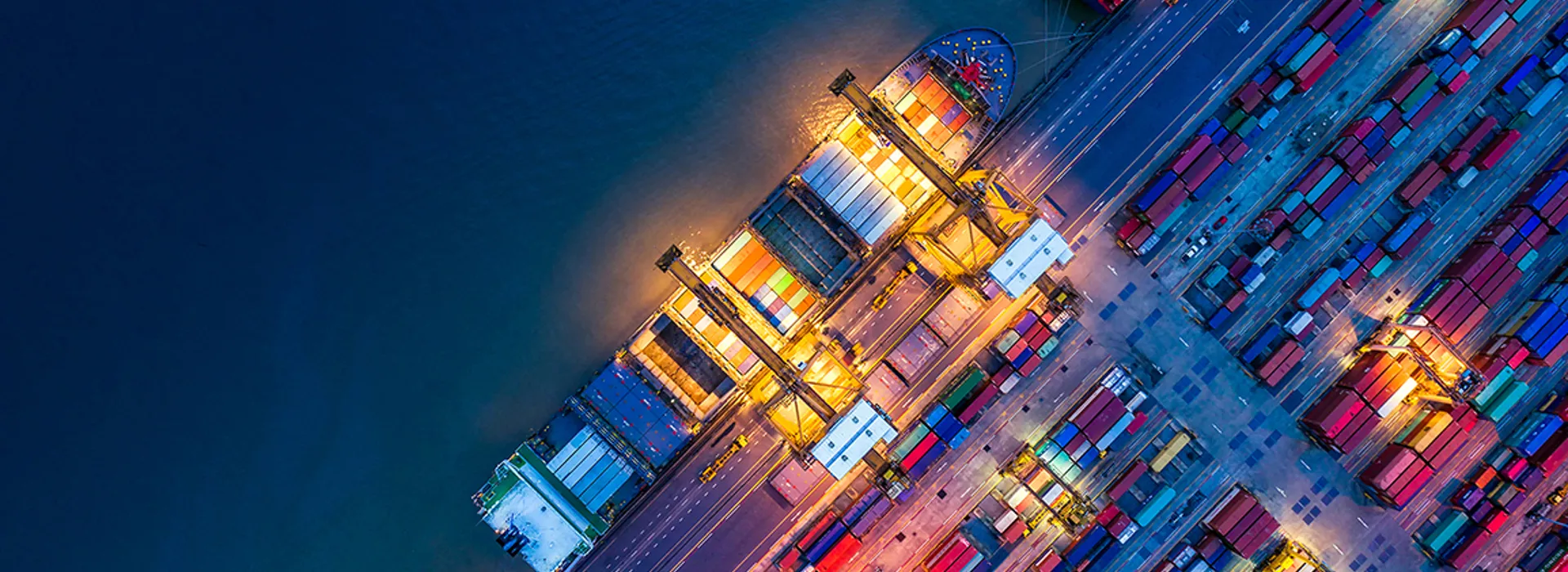Regasification is the name given to the process of using heat to convert LNG (liquefied natural gas) from a liquid to a gas, in order to make it easier to transport and distribute.
What is regasification of LNG?
When LNG is in its liquid form, its volume decreases by 600 times compared to when it is a gas. As such, it is more efficient to transport LNG as a liquid, particularly over large distances. Yet for LNG to be used as a fuel (for power generation, heating, cooking etc), it needs to be in its gaseous form. The process of converting LNG from a liquid to a gas is called regasification.
Regasification is usually done as the LNG is discharged from the vessel it’s being transported on. It can take place in three different ways:
- Indirect heating
Steam, hot water, or another external heat source, is used to warm up what is called a ‘heat transfer fluid’ (usually sea water). This fluid is then run through heat exchangers, causing the LNG to heat up and vaporise (i.e. turn into a gas). - Open-rack vaporisers (ORVs)
Liquid LNG is flowed through a network of pipes that are exposed to the surrounding air. The warm aim is forced through the pipes using fans causing the LNG to absorb heat and vaporise. - Shell-and-tube vaporisers
Warm water or steam travels inside a series of tubes while LNG is circulated on the outside of the tubes. As the liquid LNG passes over the tubes, it absorbs the heat, causing it to turn from a liquid to a gas.
How does LNG regasification work?
There are seven main stages to the LNG regasification process:
1. Storage during transportation
LNG is kept in special insulated tanks that are capable of maintaining very cold temperatures around -160°C (-260°F).
2. Transfer
Specialised vessels are used to transport LNG from where it is made at production sites to regasification facilities where it is turned back into gas.
3. Unloading
Once the LNG carrier arrives at the regasification terminal, it is moored. The LNG is then moved from the ship's tanks to storage tanks at the facility, in a process called unloading.
4. LNG storage
LNG is kept in large atmospheric or pressurised storage tanks, located at the regasification facility. These tanks are specially designed to keep the LNG very cold so that it stays in its liquid form.
5. Heating
The LNG needs to be heated in order to convert it back into its gaseous state. This can be done in several different ways (i.e. indirect heating, open-rack vaporisers, or shell-and-tube vaporisers as discussed above).
6. Pressure regulation
After the LNG has turned back into a gas, its pressure needs to be adjusted to the right level for sending it through the distribution pipelines. This is done using special pressure control valves.
7. Distribution
Once the LNG has been regasified (i.e. is in its gaseous form), it’s sent through pipelines to places where it is needed by end consumers, such as power plants, factories, and homes. It can also be loaded onto trucks to take it to areas that don't have pipelines.
What infrastructure is needed for regasification?
The regasification process requires a number of key infrastructure components, including:
LNG import terminals
A variety of equipment (e.g. storage tanks, unloading systems and safety mechanisms) are needed at terminals where LNG is received, stored, and regasified.
Storage tanks
Specially designed atmospheric or pressurised storage tanks are needed at LNG import terminals to hold incoming LNG at the extremely low temperatures required to keep it in its liquid state.
Vaporisers
These regasification units use different methods to heat the LNG in order to convert it from a liquid to a gas.
Heat sources
Heating infrastructure (e.g. boilers, heat exchangers, other heating systems), may be needed to warm the LNG via steam, hot water, or other heat transfer fluids.
Pipeline infrastructure
A pipeline distribution network is used to transport the LNG after regasification.
Safety systems
Safety measures (e.g. emergency shutdown systems, fire protection systems and vapor/gas detection systems), are needed at LNG import terminals to manage the LNG regasification process.
Marine facilities
Marine jetties or berths (with mooring systems, loading arms, and safety measures) are needed at import terminals to assist with unloading LNG from carriers.
Utilities and support infrastructure
Regasification facilities need utilities (e.g. electricity, water, and steam) in order to complete various processes, as well as support infrastructure (e.g. control systems, telecommunications, offices and maintenance facilities).
What is a floating terminal?
A floating terminal, also known as a floating storage and regasification unit (FSRU), is a unit with LNG storage and regasification facilities. They can either take the form of ships or offshore installations, depending on how they are equipped.
Used to transfer LNG, FRSU can be divided into two main categories:
- Specially designed units aboard LNG carriers.
- Old LNG carriers modified into independent units and placed in a particular destination.
However, sometimes the combined functions of an FSRU are separated and performed by different vessels:
- Storage
Done by a floating storage unit (FSU). - Regasification
Done by a floating regasification unit (FRU).
Here at Clarksons, we lead the way when it comes to the brokerage of gasses such as LNG, LPG, Ammonia and Petrochemicals. Our industry experts are able to advise and guide you from the very start of a transportation and distribution project to contract execution.


